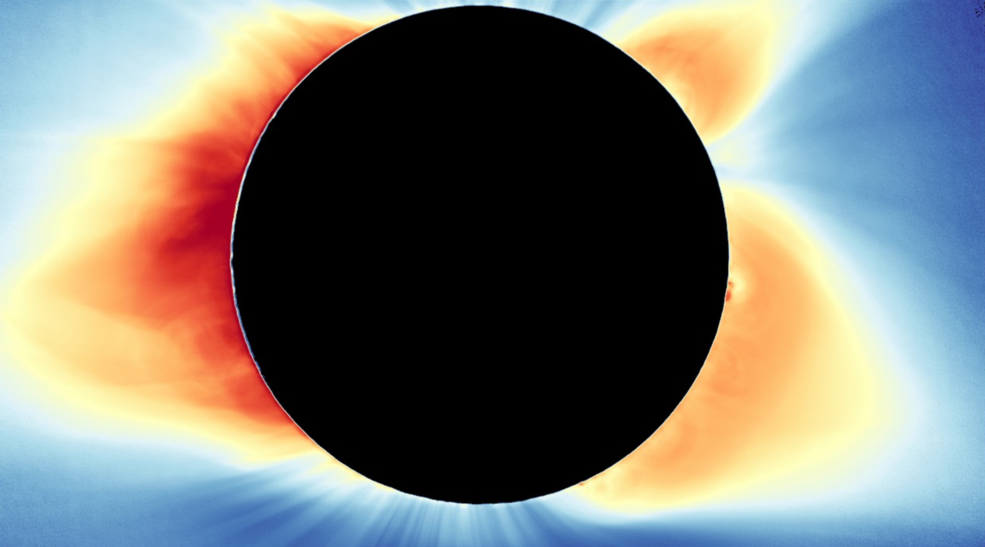On April 8, 2024, a total solar eclipse will occur, causing a section of North America to experience temporary darkness as the Moon obstructs the Sun’s light for a few minutes. This awe-inspiring event will cast a captivating shadow over millions of people, while also providing scientists with a unique opportunity to investigate the Sun, Earth, and their interactions.
To maximize this opportunity, NASA will finance five interdisciplinary science projects for the 2024 eclipse. These projects, led by researchers from various academic institutions, will employ diverse instruments, including cameras on high-altitude research planes and ham radios, to study the Sun and its impact on Earth. Citizen scientists will also be encouraged to participate in two of these projects.
Peg Luce, the acting director of the Heliophysics Division in the Science Mission Directorate at NASA Headquarters, expressed enthusiasm about the selection of these five new projects, stating, “Seven years after the last American total solar eclipse, we’re thrilled to announce the selection of five new projects that will study the 2024 eclipse. We’re excited to see what these new experiments will uncover about our Sun and its impact on Earth.”
During a total solar eclipse, the Moon completely obscures the Sun’s surface, revealing the corona, the Sun’s outer atmosphere, as a delicate, wispy halo. Solar eclipses have historically played a significant role in scientific discoveries. Kelly Korreck, a program scientist at NASA Headquarters, explained, “Scientists have long used solar eclipses to make scientific discoveries. They have helped us make the first detection of helium, provided evidence for the theory of general relativity, and deepened our understanding of the Sun’s influence on Earth’s upper atmosphere.”
Solar Eclipse High Altitude Research Planes
One of the projects, led by Amir Caspi at the Southwest Research Institute in San Antonio, will utilize NASA’s WB-57 high-altitude research aircraft to capture images of the eclipse from an altitude of 50,000 feet. By capturing these images above most of the Earth’s atmosphere, the team hopes to reveal new details about the structures in the middle and lower corona. The observations, taken with a high-resolution, high-speed camera that operates in infrared and visible light, may also aid in the study of a dust ring around the Sun and the search for asteroids in close proximity to the Sun.
Airborne Imaging of the Corona
Another project involving NASA’s WB-57s will employ cameras and spectrometers to investigate the temperature, chemical composition, and coronal mass ejections (large bursts of solar material) in the corona. By flying along the path of the eclipse, the team aims to extend their time within the Moon’s shadow by more than two minutes. These observations are expected to offer fresh insights into corona structures and the sources of the solar wind, the continuous stream of particles emitted by the Sun. The project is led by Shadia Habbal from the University of Hawaii.
Amateur Radio Astronomers Listening Party
Nathaniel Frissell from The University of Scranton plans to organize “Solar Eclipse QSO Parties” during both the 2024 total solar eclipse and an annular solar eclipse in October. Amateur radio operators will attempt to make as many radio contacts as possible with operators in different locations, documenting the strength and range of their signals. This collaborative effort will investigate how the ionosphere, an electrically charged region of the upper atmosphere affected by solar activity, changes during eclipses. Previous experiments have demonstrated that solar eclipses significantly impact the propagation of radio waves.
Solar Eclipse Radiation Effects on Upper Atmosphere
Equipped with SuperDARN radars, several locations experiencing the darkest part of the eclipse’s shadow will study the effects of solar radiation on the upper layers of Earth’s atmosphere. Bharat Kunduri from the Virginia Polytechnic Institute & State University will lead this project, employing three SuperDARN radars to investigate the ionosphere’s behavior during the eclipse.
Bringing The Sun’s Magnetic Hotspots into Sharper Focus
In conjunction with the Lewis Center for Education Research in Southern California, Thangasamy Velusamy from NASA’s Jet Propulsion Laboratory and participants in the center’s Solar Patrol citizen science program will observe solar “active regions” during the upcoming eclipses. As the Moon passes over these magnetically complex regions that form over sunspots, different portions of the active regions will be blocked at different times. This phenomenon allows scientists to analyze distinct light signals emitted by each portion. Using the 34-meter Goldstone Apple Valley Radio Telescope (GAVRT), the team will measure subtle changes in radio emissions from active regions during both the 2023 annular and 2024 total eclipses. This technique, previously employed during the May 2012 annular eclipses, enabled the detection of details on the Sun that would otherwise be imperceptible using the telescope alone.
Image Source: SwRI/NASA/Daniel B. Seaton




